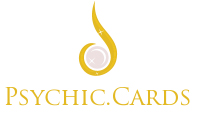There are many myths surrounding the Tarot. For example, many people were raised to believe that Tarot cards are scary, evil, or related to things of the devil. Unfortunately, this type of misinformation is widespread. Still, the truth is Tarot can serve as a powerful tool that helps you hone intuition, deepen your relationship with the universe, and connect with yourself to make better-informed decisions. Below are some of the most prevalent myths around Tarot and the reality.
You Must be Gifted Your First Deck
One of the most common myths is that you cannot buy your own first deck of Tarot cards. This is really just a form of gatekeeping in the Tarot community, and it holds no truth at all. There is nothing wrong with buying a deck for yourself. As folk magic, Tarot is for the people, so no permission is needed to start practicing.
Tarot is Evil
This myth takes on different forms: Tarot is evil or associated with the devil or satanism. This may have originated from Christianity because of Bible verses condemning all forms of sorcery and mediumship. The myth has been perpetuated so often through the media that portrayals of Tarot readers are far from ideal. This is pure myth, and like most things, Tarot can be used in both helpful and unhelpful manners. The cards themselves are not inherently evil, and they can be used to support ourselves and the overall highest good.
A Death Card Means You Die
The media has also perpetuated this myth to keep viewers interested. It is always in a super scary setting and means the character will die when it is shown. The truth is that all Tarot cards are neutral, and while some may come across as more uncomfortable than others, no single card is bad or good. The death card does not mean you will die. It usually indicates a transformation of some kind and the death of a way of being or a relationship. There is a cultural aversion to death within the U.S. The death card reminds us that death is real makes some people fear it. The truth is that death is natural and clears the way for our evolution and growth over time. Even though change is hard, there is no reason to fear the death card.
Tarot Can Only Tell the Future
Tarot can be used to predict the future, which is accurate, but the future is not set, so even when predictive cards are pulled, we must understand that we can make different decisions to change the outcome. However, Tarot cards are not only about telling the future. There are numerous spreads that are focused on different aspects of life, including the past and present.
Only a Psychic Can Read Tarot
The Tarot has many purposes, and you do not need to be psychic to read Tarot cards. It is about connecting to your intuition, which is necessary to read the cards. We all have an innate intuition. Tarot cards have meanings, and you can study those meanings to create a fulfilling Tarot practice. As you learn to trust yourself, you can add layers to the meaning.
No One Else Can Touch Your Cards
This myth is based on the idea that the cards are magical, but they are a neutral tool, and you provide the magic. Even if others touch them, nothing is gained or lost. If you simply do not like others touching your deck, then that is fine, but this will not affect the cards’ energy. Many readers like having the client shuffle the deck for a more in-depth reading. If this is your decision as well, regularly clear your deck of energy, and you will be fine.
Reversed Cards are Bad
It is not bad when a card is reversed; it simply came out of the deck in that direction. Reading reversed cards is simply a matter of preference, based on intuition. Do what works best for you in your readings. Whether reversals are read or not, they are not specifically bad. They bring different forms of energy and layers to a reading, but there is no need to fear them. Reversed cards usually mean blocked energy, a softer meaning, or fear around the card’s inherent meaning.
Do not let the myths scare you away from Tarot. It is simply another tool in the box. Too often we let the media, superstitions, and general information set our feelings, even when this information is inaccurate. Be open to learning about Tarot and you can benefit from this tool as well.


A comprehensive guide that dispels many common misconceptions. Understanding the actual purpose and use of Tarot is crucial for rational discourse.
The article offers a well-rounded debunking of common myths surrounding Tarot. It’s important to approach such topics with an open mind and critical thinking.
This read provides valuable clarifications. The historical context and the differentiation between myth and reality are particularly enlightening.
A very informative article. The author does a good job of addressing and refuting common myths while emphasizing the importance of individual intuition in Tarot practice.
The breakdown of each myth is quite thorough. I especially appreciate the nuanced discussion on the Death card and its symbolic meaning.
I agree, Mildred. The positive spin on the Death card as a symbol of transformation rather than literal death is particularly insightful.
Indeed, the cultural aversion to death is something that significantly skews the interpretation of such symbols. This article provides much-needed clarity.